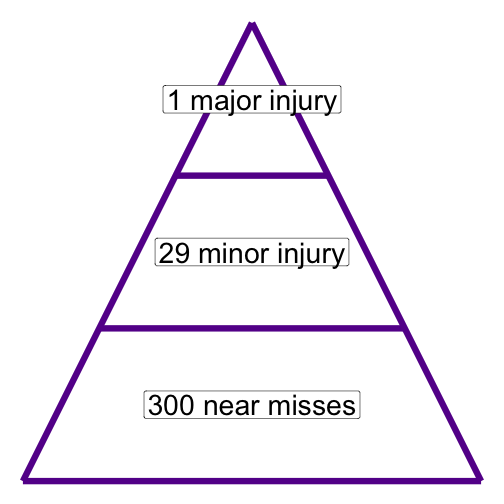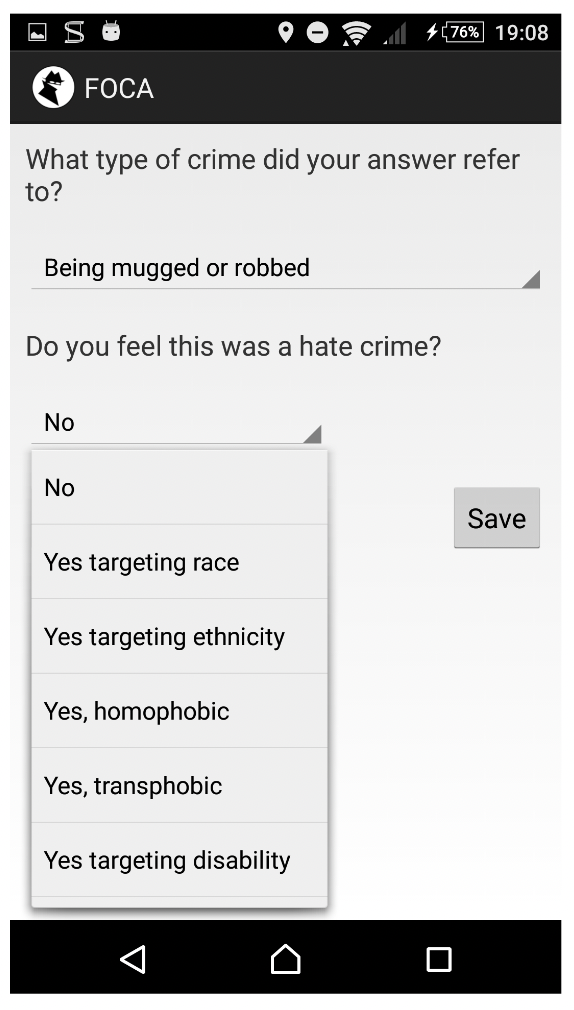Near Misses in Research on Crime and Fear of Crime
Réka Solymosi
University of Manchester
10/05/2022
1 / 38
My research
- Fear of crime (place-based approach)
- New (?) / alternative (?) forms of data
- Under-reported crimes
2 / 38
App for reporting fear of crime
3 / 38
4 / 38
5 / 38
6 / 38
7 / 38


8 / 38
9 / 38


10 / 38
11 / 38
Overall: learned about fear of crime as a context specific, place based experience.
12 / 38
Near Misses
13 / 38
Near Misses
- What is a near miss?
13 / 38
Near Misses
What is a near miss?
Why is this interesting?
13 / 38
The safety pyramid has a long history dating back to 1931 and H.W. Heinrich with his pioneering book Industrial Accident Prevention: A Scientific Approach

14 / 38
- Variations and discussions about the ratios
- All of these studies used large groups and expressed the results in triangles or pyramids
| Level | Heinrich 1931 | Bird & Germain 1969 | Fletcher 1972 | Tye 1975 |
|---|---|---|---|---|
| Fatal injury | 1 | |||
| Major injury | 1 | 1 | 1 | |
| Minor injury | 29 | 10 | 19 | 3 |
| First aid only | 50 | |||
| Property damage | 30 | 80 | ||
| Noninjury | 300 | 600 | 175 | 400 |
15 / 38
General idea: paying attention to and understanding the near misses can possibly lead to understanding and preventing serious incidents.
16 / 38
Why is this important?
17 / 38
Reason 1:
Even if near misses do not "predict" more serious incidents, they have consequences in themselves
18 / 38
Near misses and fear in cycling

19 / 38
20 / 38
21 / 38
22 / 38
Fear of crime also linked with 'near miss'
23 / 38
Example: FOCApp
I was on my way into university in the morning, and I was coming into Euston station and there was someone who looked like they were trying to remove a bike from the railings that had been locked in, and they didn’t look like the owners of the bike. And then I suspected they were trying to steal the bike, so I reported my fear of crime because it was a specific incident of me seeing what I thought was criminal activity.
24 / 38
Example: CinCity

25 / 38
Fear of crime affects:
- equal access to public space
26 / 38
Fear of crime affects:
equal access to public space
sustainable travel
26 / 38
Fear of crime affects:
equal access to public space
sustainable travel
individual and community wellbeing
26 / 38
Reason 2:
If near misses predict serious incidents, we can study spatial and temporal patterns of incidents on which we otherwise have sparse data
27 / 38
28 / 38
29 / 38
30 / 38
Reason 3:
By becoming interested in the near misses, we "lower the barrier" to reporting something, providing insight into crimes which are traditionally underreported
31 / 38
32 / 38
33 / 38
34 / 38
35 / 38
4 reports labelled as "Hate Crime" (2 x Fairly and 2 x Very worried)

36 / 38
Conclusions:
37 / 38
Conclusions:
- Place/ context specific fear of crime events can be thought of as "near misses"
37 / 38
Conclusions:
- Place/ context specific fear of crime events can be thought of as "near misses"
- In any case, may be important in themselves as fear of crime events with real consequences
37 / 38
Conclusions:
- Place/ context specific fear of crime events can be thought of as "near misses"
- In any case, may be important in themselves as fear of crime events with real consequences
- But if near miss may help identify areas of concern/ interest
37 / 38
Conclusions:
- Place/ context specific fear of crime events can be thought of as "near misses"
- In any case, may be important in themselves as fear of crime events with real consequences
- But if near miss may help identify areas of concern/ interest
- And may help complement data sources on underreported incidents
37 / 38
Relevant Papers
- Mapping fear of crime as a context-dependent everyday experience that varies in space and time
- Towards a Place-based Measure of Fear of Crime: A Systematic Review of App-based and Crowdsourcing Approaches
- Understanding Knife Crime and Trust in Police with Young People in East London
- Thesis
38 / 38